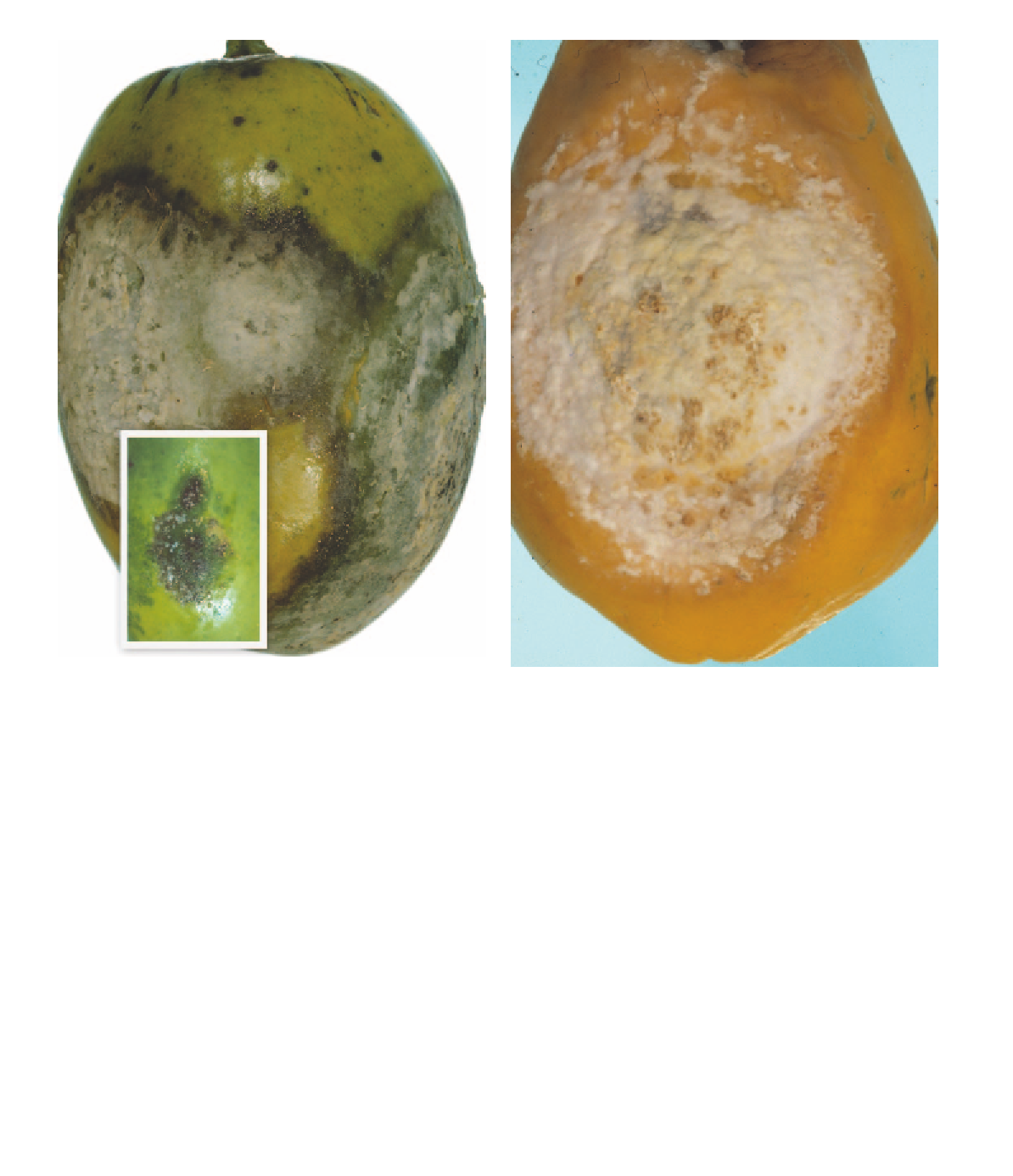Agriculture Reference
In-Depth Information
Fig 14.23 Phytophthora fruit rot on a green field papaya fruit.
Inset: young lesion.
Fig 14.24 Phytophthora fruit rot on ripe papaya fruit.
occurring in concentric bands. The fruit may shrivel,
mummify and fall to the ground.
Small, water-soaked spots develop on the stem around
fruit and leaf scars, particularly in the region of fruit
production. The infected areas enlarge and can completely
girdle the stem of young trees, causing wilting and eventual
death of the top of the plant. Older plants may not be
completely girdled but the stem is weakened and easily
broken by wind.
root system shows a soft, wet rot extending into the trunk.
In older plants the taproot is usually decayed and the
surface roots may also be affected.
Source of infection and spread
The pathogens survive in soil and on rotting fruit and stems
where sporangia are produced in the presence of water.
Wind-blown rain and water splash carry the sporangia to
papaya plants where they germinate and infect fruit and
stems through either wounds or undamaged tissue. The
pathogens can also spread rapidly in surface water, and in
soil adhering to machinery and animals.
Green fruit is resistant to infection but can be invaded
through wounds or through the stem end from stem
cankers.
Importance
Phytopthora root rot is a serious disease in hot, wet regions,
particularly during periods of heavy rain. The disease can
cause major losses of both fruit and plants following
periods of prolonged wet weather. Root rot is mainly a
replant problem.
Phytophthora root rot causes a yellowing and collapse of
the leaves, commencing with the older leaves and
progressing up the plant. The young crown leaves
eventually wilt and the plant dies, usually within a few
days. Some plants may linger for long periods but fall
easily, especially if carrying fruit. In young trees the entire











